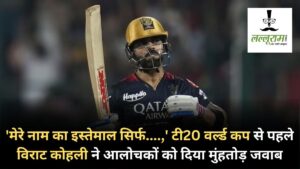Behind Paralympics glitter: Govt push, pvt effort, higher coaching
4 min readFOR INDIA, just like the Olympics final month, the Tokyo Paralympics ended with a gold medal that added glitter to its best-ever exhibiting. On Sunday, shuttler Krishna Nagar did a Neeraj Chopra, together with his win within the last giving India its fifth gold medal. And with 19 medals total, India completed twenty fourth on the medals tally.
India’s rely was boosted by the four-medal sweep in badminton, a sport making its debut, and 4 extra in new classes in different disciplines. However, there’s extra to the para-leap of a nation that had a grand complete of simply 12 medals earlier than Tokyo: a more durable push by the federal government, well timed hand-holding by non-public gamers, mushrooming of unique arenas and incentives, and most importantly, a stage taking part in subject for para and able-bodied athletes.
Javelin thrower Sumit Antil, 23, who broke three world information on method to gold, hints that his coaching and publicity wasn’t too completely different from Indian sports activities’ new poster-boy Neeraj.
“In 2018, some para athletes also got a chance to train in Finland with other athletes like Neeraj Chopra and that was a huge mental motivation for us. We knew that we were being treated the same as the able-bodied athletes. I got a chance to compete in Italy, France, Tunisia in the last three years and it also made me understand the different conditions, a thing which will also help in preparation for the 2024 Paris Olympics,” he says.
Antil acquired a Rs 7 lakh prosthetic blade, tools and biomechanics help, due to the Sports Authority of India and NGO Go Sports Foundation.
Says silver medallist discus thrower Yogesh Kathuniya: “Apart from facilities, governments now see para-athletes’ achievements the same way as normal athletes in terms of cash awards and jobs. This has added to our confidence.” Like Chopra, Antil acquired Rs 6 crore from the Haryana authorities for his javelin gold.
Besides, the complete 54-member Indian contingent — the biggest ever on the Paralympics — was part of the Central Government’s flagship Target Olympic Podium Scheme (TOPS). The Government spent virtually Rs 8.2 crore on para-sports from 2018-19 to 2021-22, the Sports Minister informed Lok Sabha this yr.
Besides, the spending was athlete-specific and got here on the proper time.
The Sports Ministry funded the set up of a computerised digital goal at gold and bronze medal-winning shooter Avani Lekhara’s residence, aside from caring for the heavy prices of her air rifle, ammunition and equipment. Under TOPS, wheelchair silver medallist Bhavina Patel acquired an up to date “practice partner” robotic that helped her through the lockdown final yr.
The outcomes had been there to see. Patel made it to the rostrum in a sport lengthy dominated by the Chinese, beating World No 3 Zhang Miao to win silver within the girls’s Class 4 (wheelchair) singles occasion.
“So many people get scared when the opponent is Chinese. By beating them, I proved that they too are human,” she says after turning into the one Indian desk tennis participant to have received an Olympic or Paralympic medal.
Public-private partnerships, too, performed a job. Working with para-athletes since 2008, GoSports Foundation was affiliated with 11 of the 19 para-athletes for Rio 2016, and continued its work forward of the Tokyo Games, when the Sports Ministry acquired in contact.
“They’d call and ask us what all we’ve done for a particular athlete so that there is no duplication,” says GoSports’ government director Deepthi Bopaiah. “So, for Avani, the Government looked after certain training and competitions abroad, and we paid for her coaching here. For Sumit Antil, we looked after his prosthetics and they took care of his travel to tournaments.”
This time, one other non-public initiative, Olympic Gold Quest (OGQ), acquired concerned in supporting para-athletes — 10 of whom picked up medals.
And then, coaching acquired extra streamlined. “Earlier, we had to book time slots to play, but now we have a dedicated professional academy with all facilities and sports science equipment,” says para-badminton head coach Gaurav Khanna about his facility in Lucknow. “We can decide when to schedule practice. And then there is the gym, steam bath, ice bath, hydrotherapy…everything a professional athlete needs.”
Facilities just like the SAI campus in Gandhinagar and the desk tennis centre in Indore too are geared up for para-athletes with teaching strategies having modified through the years.
The opening of extra avenues and elevated incentives have seen participation spike. There had been round 700 para-athletics on the nationals in 2015, and 1,800 in 2019.
Says desk tennis star Patel: “Earlier, people didn’t know what the Paralympics were. It’s improved, but it’s not enough. There are still places where people think, ‘yeh bechare hai.’ That has to change. Hum bechare nahin hai (We are not helpless). Look at what we’ve achieved. Our Paralympians have brought more medals than Olympians. And there’s more we can still achieve.”
Incidentally, India completed forty eighth on the medals tally within the Tokyo Olympics, with a best-ever haul of seven, together with Chopra’s gold.
Says three-time Paralympics medallist Devendra Jhajharia: “We still can improve as medals have only come in athletics, shooting, badminton and table tennis but Tokyo has set the momentum for us.”






